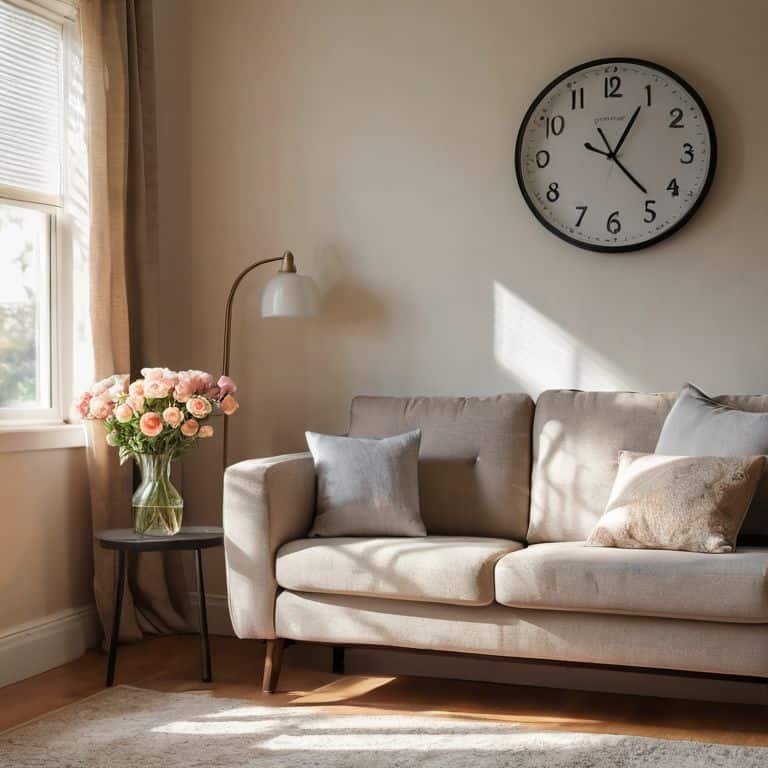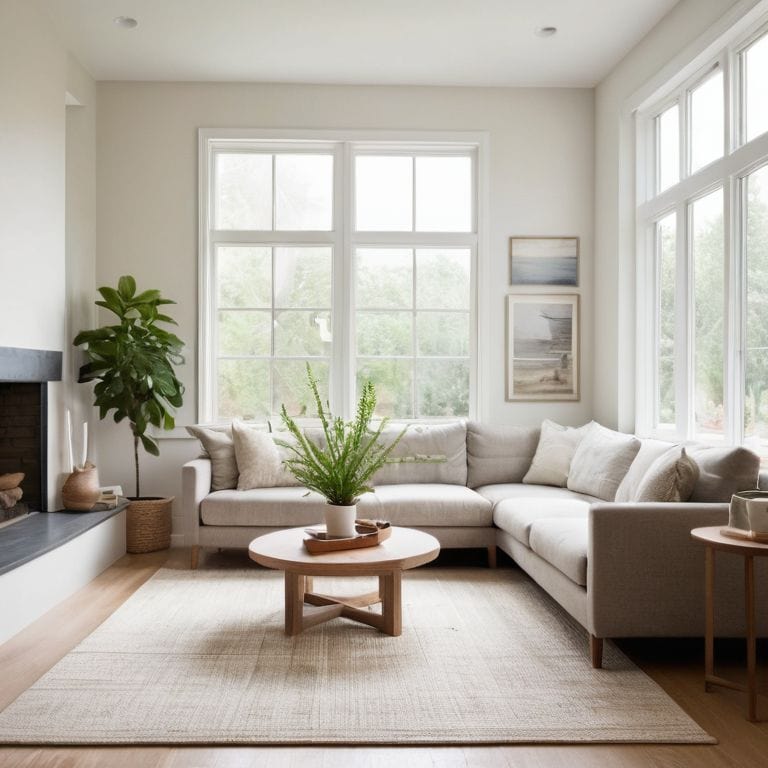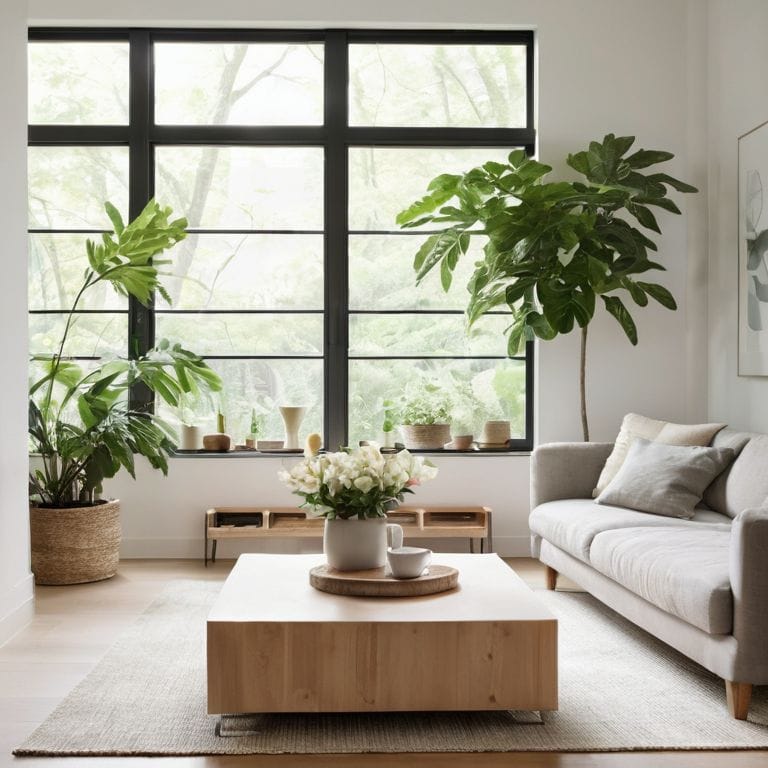I still remember the day I realized that my cluttered desk was a reflection of my cluttered mind. I was working as an HR professional, and I noticed that my colleagues with tidy workspaces seemed more focused and calm. This sparked my interest in understanding how to maintain a tidy home, and I began to explore the psychological benefits of organizing. As I delved deeper, I discovered that it’s not just about cleaning and decluttering, but about creating a space that nourishes our well-being. I’ve seen many people struggle with maintaining a tidy home, and I believe it’s because they’re focusing on the wrong things.
In this article, I’ll share my personal approach to how to maintain a tidy home, which is centered around creating habits that promote inner calm and outer order. I’ll provide you with practical tips and strategies that have worked for me and my clients, from simple decluttering techniques to more advanced methods for maintaining a peaceful living space. My goal is to help you understand that maintaining a tidy home is not just about physical cleanliness, but about creating a sanctuary that supports your mental and emotional well-being. By the end of this article, you’ll have a clear understanding of how to create a home that feels like a haven, and you’ll be equipped with the tools and motivation to make it a reality.
Table of Contents
Guide Overview: What You'll Need

Total Time: 1 hour 30 minutes
Estimated Cost: $10 – $30
Difficulty Level: Easy
Tools Required
- Vacuum Cleaner (with various attachments)
- Mop (for floor cleaning)
- Duster (extendable for reaching high areas)
- Broom (with dustpan for sweeping floors)
- Trash Bags (in various sizes)
Supplies & Materials
- All-purpose Cleaning Solution
- Glass Cleaner
- Disinfectant Spray
- Sponges (for wiping down surfaces)
- Microfiber Cloths (for dusting and cleaning)
Step-by-Step Instructions
- 1. First, let’s start by setting intentions for our space. Take a few moments to walk through your home and notice how you feel in each room. Are there areas that feel overwhelming or chaotic? Are there spaces that bring you a sense of calm and peace? Understanding how you want to feel in your home is crucial to creating a tidy and organized environment that supports your well-being.
- 2. Next, I recommend creating a “home for everything” in your space. This means assigning a designated spot for each item, making it easier to find what you need and put things back in their place. Start by categorizing items into groups, such as cleaning supplies, kitchen utensils, or office materials. Then, assign a specific location for each group, and make sure everything has a clearly defined home.
- 3. Now, let’s talk about the power of routines. Establishing daily and weekly routines can help maintain a tidy home and reduce stress. Set aside a few minutes each day to tidy up, putting away items that are out of place and making sure everything is in its assigned spot. You can also schedule weekly tasks, such as cleaning or laundry, to keep your home running smoothly.
- 4. The next step is to simplify and streamline your belongings. Go through each room and sort items into three categories: keep, donate/sell, and discard. Be honest with yourself about each item, and ask if it brings you joy or serves a purpose. If not, consider letting it go. Remember, the fewer items you have, the less clutter you’ll accumulate, and the easier it will be to maintain a tidy home.
- 5. To take your tidying to the next level, try implementing the “one in, one out” rule. This means that for every new item you bring into your home, you must remove or donate an old one. This rule helps maintain a balanced amount of possessions and prevents clutter from building up. It’s a simple yet effective way to keep your space organized and clutter-free.
- 6. Now, let’s focus on creating systems for paper clutter, such as bills, receipts, and documents. Set up a designated spot for sorting and filing papers, and consider digitizing your documents to reduce physical clutter. You can also establish a routine for reviewing and responding to paperwork, such as setting aside a specific day each week to tackle administrative tasks.
- 7. Finally, remember that maintaining a tidy home is a process that takes time, effort, and patience. Don’t be too hard on yourself if you encounter setbacks or struggles along the way. Celebrate your small victories, and acknowledge the progress you’ve made. With consistent practice and a willingness to adapt, you can create a peaceful and organized home that brings you joy and serenity.
Finding Serenity

As I work with clients to create their ideal living spaces, I’ve noticed that finding serenity is often the ultimate goal. It’s not just about tidying up, but about crafting an environment that promotes relaxation and calmness. To achieve this, I recommend starting with decluttering tips for beginners, which involves letting go of items that no longer serve a purpose or bring joy. By doing so, you’ll be able to focus on the things that truly matter and create a sense of clarity in your space.
Creating a cleaning schedule can also be incredibly helpful in maintaining a sense of serenity. By breaking down larger tasks into smaller, manageable chunks, you’ll be able to stay on top of your cleaning and avoid feeling overwhelmed. This, in turn, will allow you to focus on the things that bring you peace and tranquility, such as minimalist home decor inspiration. Remember, it’s all about finding a balance that works for you and your unique lifestyle.
As you work towards creating your own sanctuary, keep in mind that productivity habits for a tidy home are just as important as the physical space itself. By developing healthy habits, such as putting things back in their place and avoiding clutter, you’ll be able to maintain a sense of calm and focus. This, in turn, will allow you to enjoy your space and make the most of your time, whether that’s reading a book, practicing yoga, or simply enjoying a cup of coffee in peace.
Creating Calm Through Decluttering
As I always say, every object in our home should have a “purpose or a place.” When we surround ourselves with clutter, our minds can become just as disorganized. By letting go of items that no longer serve us, we create space for clarity and calm. I encourage my clients to “interview” their belongings, asking themselves if each item brings joy, serves a function, or holds sentimental value. This simple yet powerful exercise helps to quiet the mind and bring a sense of serenity to our living spaces.
Through this process, we can uncover the beauty of simplicity and discover that our true sanctuary was within us all along, waiting to be uncovered.
Sustaining Peace With Productivity Habits
To sustain the peace found through decluttering, I recommend integrating productivity habits into your daily routine. This can be as simple as dedicating 10 minutes each morning to maintaining your space, or implementing a “one touch rule” where you put things away in their designated place as soon as you’re done using them.
By doing so, you’ll not only keep your physical space organized, but also cultivate a sense of mental clarity and focus. I’ve found that when my surroundings are in order, I’m better equipped to tackle the day’s tasks with a clear mind and a sense of purpose.
Cultivating Serenity: 5 Essential Tips to Maintain a Tidy Home
- Start with a Purposeful Morning Routine: Begin each day by dedicating a few minutes to maintaining your space, whether it’s making your bed or putting away a few dishes
- Designate a Home for Each Item: Assign a specific place for every object in your home, making it easier to find what you need and put things back where they belong
- Practice the Art of Mindful Decluttering: Regularly go through your belongings and ask yourself if each item brings you joy or serves a purpose, letting go of anything that doesn’t meet these criteria
- Implement Productive Habits for Sustained Peace: Develop routines such as weekly cleaning, meal prep, or scheduling downtime to maintain a sense of control and calm in your life
- Schedule Regular ‘Interviews’ with Your Belongings: Set aside time to review your possessions and reassess their purpose or value, ensuring that your space remains a reflection of your current needs and desires
Key Takeaways for a More Serene You
I’ve learned that by assigning a purpose or a place to every object in my home, I can maintain a sense of order and reduce mental clutter
Through my experience with clients and my own journey, I’ve found that creating calm through decluttering is not just about getting rid of items, but also about cultivating a mindset that values simplicity and intention
By incorporating simple, logical systems and productivity habits into daily life, individuals can sustain a sense of peace and tranquility in their homes, which in turn, can have a profound impact on their mental well-being
The Sanctuary Mindset
A tidy home is not just a reflection of our physical space, but a mirror to our mental clarity – and by intentionally curating what we allow into our lives, we can transform our surroundings into a sanctuary that nurtures both body and soul.
Nathan Reed
Embracing the Sanctuary Within

As we’ve journeyed through the steps to maintain a tidy home, it’s essential to remember that creating a sense of calm is just as important as implementing organizational systems. By embracing the process of decluttering and establishing productivity habits, you’ve taken the first steps towards transforming your space into a true sanctuary. It’s about understanding that every object in your home should have a purpose or a place, and that this mindset can extend far beyond your physical surroundings, influencing your mental clarity and sense of peace.
As you continue on this path, remember that the goal isn’t just to have a tidy home, but to cultivate a sense of serenity that stays with you wherever you go. By making these habits a part of your daily life, you’re not just organizing your space, you’re organizing your mind, and that’s a truly powerful thing. So, take a deep breath, enjoy the peace that your sanctuary brings, and know that you have the tools to maintain it, and more importantly, to nurture your inner calm.
Frequently Asked Questions
How can I balance the desire for a tidy home with the need to preserve sentimental items and memories?
I call this the ‘sentimental edited keep’ – where you thoughtfully curate items that spark joy, assigning each a purpose or a designated place, and letting go of the rest, allowing the memories to remain, not the clutter.
What are some strategies for maintaining a clutter-free space when living with others who may not share the same organizational habits?
Living with others can be challenging, but I’ve found that setting clear expectations and designating shared spaces can help. I encourage my clients to have an open conversation with their household members about their organizational goals and establish a “home” for each item, making it easier for everyone to maintain the space.
Are there any specific organizational systems or tools that you recommend for managing paperwork and digital clutter in the home?
I swear by a simple filing system and a digital cloud storage service to keep paperwork and digital clutter at bay. For paperwork, I recommend a categorized file organizer, and for digital clutter, a cloud service like Dropbox or Google Drive to store and access files from anywhere.
